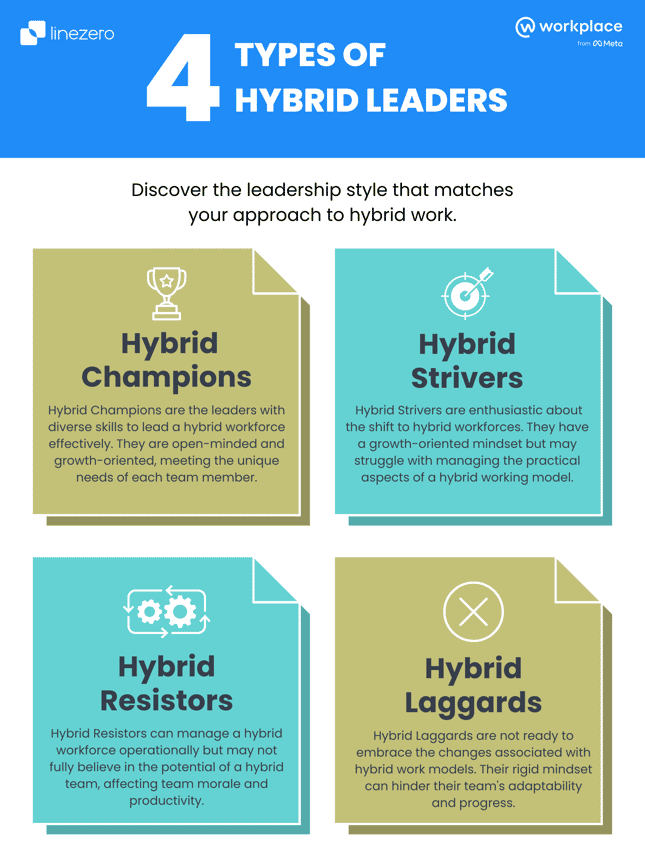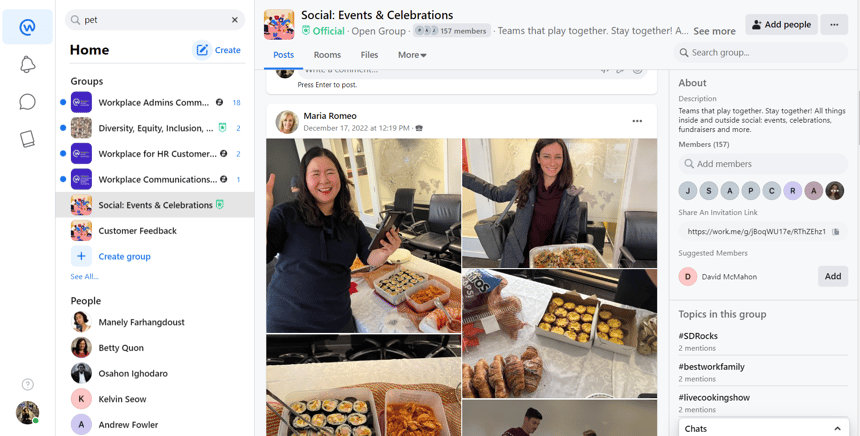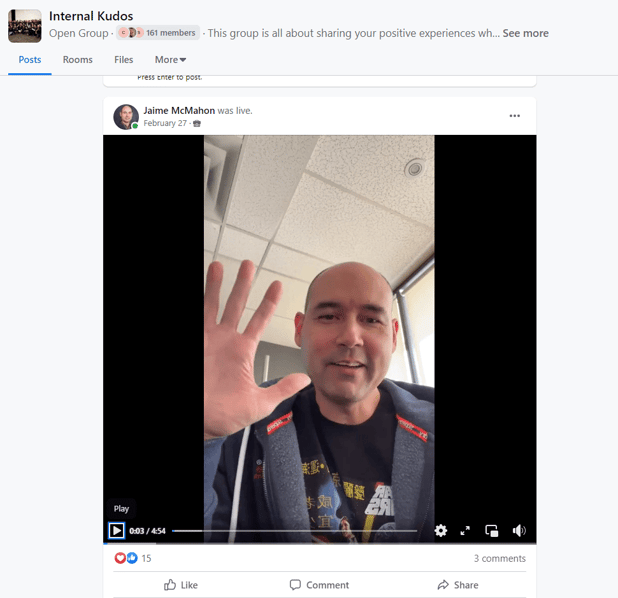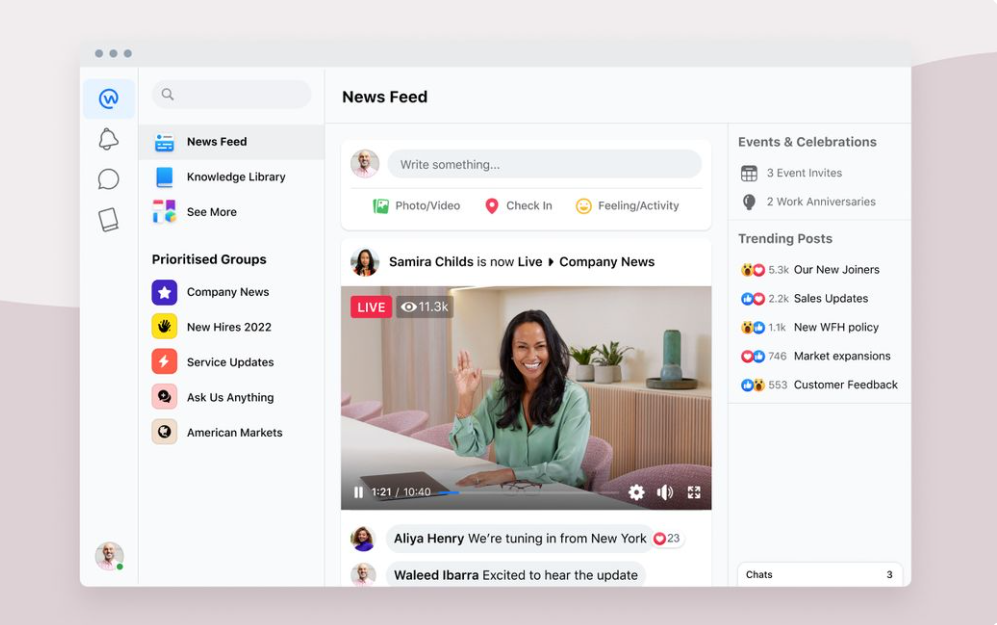This is an era of remote work and distributed teams. Organizations have realized the potential of remote work in the post-COVID world – and there is no going back. Business managers are now shifting to a new mold to be better leaders. But what does a good hybrid leader look like?
This blog aims to delve into the concept of hybrid leadership, examining its significance in the current remote work environment, its distinct facets, and the skills required to navigate it successfully. We'll also explore how hybrid leadership can revolutionize your company's corporate dynamics and productivity, shaping a future where work is not a place you go to but something you do.
In this blog, you will find:
🌍 The Evolution of Leadership Before COVID and Remote Work
📊 The Importance of Hybrid Leadership in Today's Work Environment
👥 How to Manage Remote and In-Person Teams Effectively
🌐 The Four Types of Hybrid Leaders
❗ The Challenges of Hybrid Work
💡 Effective Hybrid Team Leadership: Essential Abilities and Skills
💥 The Impact of Hybrid Leadership on Employee Experience
🖥️ Leveraging Technology for Effective Hybrid Team Management
The Evolution of Leadership Before COVID and Remote Work
The world as we knew it before COVID will never return. The pandemic has transformed the paradigm of 9-to-5 work at offices. According to a study by AT&T, hybrid workforces are expected to grow by 81% in 2024. The adaptation from on-site to a remote work setting made the corporate world realize the potential of the Hybrid Workforce. However, the main ingredient to support this shift is a champion leadership style that doesn't see a hybrid workforce as a risk.
What is Hybrid Leadership?
Hybrid leadership is a contemporary leadership style that effectively manages a hybrid workforce - a team comprising remote and in-office employees. This leadership style appreciates the benefits and addresses the unique challenges of a hybrid work model.
A hybrid leader is adept at fostering communication, collaboration, and cohesion among team members, regardless of their physical location. They understand that different employees may have different work preferences and arrangements, and they can create an inclusive and engaging environment that respects these differences.

Furthermore, hybrid leadership involves leveraging technology to keep teams connected, ensuring that remote workers are not left out of important conversations and decision-making processes. This leadership style is also about striking the right balance between granting autonomy and maintaining productivity and accountability.
In essence, hybrid leadership is about guiding and leading a geographically diverse team to work together effectively, fostering a culture that supports flexibility while maintaining a strong focus on achieving organizational goals.
The Importance of Hybrid Leadership in Today's Work Environment
In the post-COVID world, business leaders quickly realize that employees go above and beyond once they choose where, how, and when they want to work. Statistics show that 48% of employees are doing some sort of remote work for their employers after the pandemic. According to FlexJob’s employee engagement report, 26% of employees say they will be shifting to a hybrid workforce plan in the future. However, without effective hybrid leadership, it is impossible to offer your organization the resilience and flexibility that it needs.
Regardless, the hybrid workforce is going to prevail in the post-COVID world if business leaders start to reimagine the way we work without sacrificing employee engagement and communication.
Giving freedom choice to employees will not only ensure an amazing employee experience but it is also significant for skill development
Adapting To the New Normal
With 65% of employees wanting to do work remotely and 32% preferring a hybrid model, it is significant to adapt to a flexible leadership mindset. Hybrid-ready business leaders don't see a risk when they approach a hybrid work model. Adapting to the new normal is only possible if leadership stops insisting on preserving the traditional paradigm of working.
How to Manage Remote and In-Person Teams Effectively
Effectively managing a hybrid workforce is a nuanced task, one that requires leaders to skillfully orchestrate the flow of employees across multiple locations. This could involve remote locations where employees work individually, smaller microsites with a handful of team members, or traditional office spaces bustling with activity.
The key to efficient management is recognizing that productivity can be achieved anywhere, given the right conditions. It's about striking a balance between providing autonomy and maintaining oversight. With this approach, work gets done when and where it can drive the highest productivity.
As we move forward, we'll explore the four types of hybrid leaders, each with a unique approach to this challenge. We'll identify the common obstacles in hybrid work and offer insights into maintaining communication, engagement, and productivity. We'll outline essential abilities and skills for successful hybrid leadership. With this knowledge, you'll be well-prepared to lead your hybrid team effectively.

The Four Types of Hybrid Leaders
There are four types of hybrid leadership.
1. Hybrid Champions
These are the kind of leaders who possess a multitude of abilities to offer the greatest hybrid leadership to an organization. They possess a diverse range of skills that enable them to maximize the potential of a hybrid workforce. Open-minded and growth-oriented, they adeptly address the unique needs of each team member, irrespective of their work setting.
An example might be a CEO who successfully implements flexible work policies while maintaining or even boosting overall productivity and employee satisfaction.
2. Hybrid Strivers
These leaders recognize the future trend toward hybrid workforces and are enthusiastic about this shift. They possess a growth-oriented mindset and are eager to adapt. However, they may struggle with managing the practical aspects of a hybrid working model, such as coordinating between in-office and remote teams.
For example, a department head who supports hybrid work but struggles to ensure smooth communication and workflow among their team members would fall into this category.
3. Hybrid ResistErs
These leaders are capable of managing a hybrid workforce operationally, but they may not fully believe in the potential for a hybrid team to succeed, which can create a negative impact on team morale and productivity.
An example would be a manager who reluctantly implements a hybrid model due to company policy, but does not promote or support it enthusiastically, resulting in a lack of team cohesion and motivation.
4. Hybrid Laggards
These individuals display a rigid mindset, rejecting the evolving norms of work. They are not ready to embrace the changes associated with hybrid work models, potentially hindering their team's adaptability and progress.
An example might be a traditional leader who insists on old working methods, refusing to implement flexible work arrangements or utilize digital collaboration tools, thereby creating a disconnect with employees who prefer or need more flexible work arrangements.

Looking back at these four types of hybrid leaders, you might be wondering - where do I fit in this picture? Are you the go-getter Hybrid Champion, leading the charge into this new world of work? Or perhaps you're a Hybrid Striver, ready and eager to embrace the change, even if there are a few bumps in the road?
Maybe you're a Hybrid Resister, not quite convinced about this whole hybrid work thing, but willing to give it a shot. Or are you a Hybrid Laggard, feeling most comfortable with traditional ways of working and a little hesitant about this hybrid business?
No matter where you currently stand, remember there's no judgment here. It's all about growth and moving forward!
the Challenges of Hybrid Work
Although the emergence of hybrid work models has brought a series of flexible solutions, there are a few challenges to managing a hybrid workforce.
1. Communication Barrier
Perhaps the most significant challenge that hybrid leaders face is bridging the communication divide. It's crucial to establish robust channels that connect your in-office and remote teams, fostering a cohesive working environment. And let's not forget about tracking productivity - understanding what works best for your organization is key.
This is where tools like Workplace from Meta come into play. They can help you create a seamless communication channel, ensuring your employees are engaged and connected in real time.

2. Maintaining Engagement and Productivity
In a hybrid work setup, maintaining productivity isn't just about setting tasks and meeting deadlines. It's about fostering an environment where employees feel connected, engaged, and motivated to perform at their best, regardless of their location. With remote teams, the challenge magnifies as geographical dispersion can lead to feelings of isolation and disengagement.
Internal communication tools, such as Workplace form Meta can help overcome this challenge by providing a platform for real-time communication, collaboration, and social interaction. These tools help maintain a sense of unity and shared purpose. They allow leaders to stay in tune with their team's progress, identify bottlenecks, and take timely action to ensure optimal productivity.

3. Balancing Remote and In-Person Team Dynamics
Statistics show that 83% of the employees prefer a hybrid working model instead of the traditional 9-to-5 job. However, it is also essential for some of your employees to stay on-site at all times. Balancing these different work setups can be challenging, involving managing diverse expectations and needs.
Fortunately, technological advancements have gifted us with powerful tools for this exact purpose. From meetings in virtual reality to the Corporate Metaverse and specially designed hybrid tools, we now have resources that enable seamless coordination and communication between all team members, irrespective of their location.

Effective Hybrid Team Leadership: Essential Abilities and Skills
The following skills are essential for cultivating a champion hybrid leadership mindset
EMBRACING CHANGE AND ADAPTABILITY to your Leadership Style
The mark of a successful hybrid leader lies in their open-mindedness and adaptability. The ability to view change as a pathway to progress rather than a threat is critical in this evolving landscape. Hybrid leaders need to be flexible, and ready to adapt their leadership style to the changing dynamics of the team and the work environment. They should be open to new ideas, technologies, and methods of working, harnessing them to drive the team's success.
Developing Key Skills for Managing Hybrid Teams
It calls for the development of certain key skills and a growth-oriented mindset. A strong hybrid leader exercises their authority effectively, ensuring every team member feels valued and heard. They foster an environment of trust and collaboration, balance the needs of remote and on-site employees, and leverage technology to ensure smooth and efficient operations.
3 Traits of a Good Hybrid Leader
-
Listen: a good leader always has empathy and care for his employees. He understands their concerns and takes steps to make the employee experience better
-
Inspire: a good hybrid leader is not a dictator, she is an inspiration. You need to set examples and motivate people to be better
-
Learn: a good leader will never stop learning. You need to know everything about your team, from their shortcomings to individual abilities.

The Impact of Hybrid Leadership on Employee Experience
Good and bad hybrid leadership can impact employee experience. Good hybrid leadership will give employees a sense of freedom and security. When employees feel like they are heard, they go above and beyond to get the job done. On the other hand, poor hybrid leadership means poor employee experience. This can fragment your workforce and create gaps in the team's productivity.
Some companies have already shifted to a remote and hybrid workforce plan. Companies like Adobe, Salesforce, and Amazon are using these new workforce plans to bring a productivity increase that was impossible without effective hybrid leadership. Among other companies, Spotify is also an example of organizations tuning in to the idea of working from anywhere, anytime.
Leveraging Technology for Effective Hybrid Team Management
Managing a hybrid workforce means dealing with the challenges that come with it. The very first step is to leverage technologies to improve corporate engagement, collaboration, and productivity. LineZero is the biggest Workplace from Meta partner – helping your hybrid workforce adapt to the new mode of communication and work.
. Here's how it can help hybrid workforces adapt to new modes of hybrid communication and work:
-
Enhanced Communication: Workplace from Meta bridges the gap between in-office and remote team members by providing a platform for seamless, real-time communication. It offers features like live video broadcasting, group chats, and news feeds that help keep everyone in the loop.
-
Collaboration: Workplace promotes effective collaboration through features like project groups, multi-company groups, and document collaboration tools. These features make it easier for teams to work together, irrespective of their physical location.
-
Workplace Chat: This feature is similar to Facebook's Messenger, allowing for instant messaging, voice and video calls, which can be particularly useful for quick, informal discussions and check-ins.
-
Live Video and Auto-Translate: The platform’s live video feature makes it possible for companies to host meetings, presentations, or Q&A sessions, while the auto-translate feature ensures language isn't a barrier on global teams.
-
Integration: Workplace integrates seamlessly with other commonly used tools like Google Drive, Office 365, and Dropbox, making it easier for teams to share and collaborate on documents.
-
Safety and Security: With advanced security features, Workplace ensures that all company communications and data remain private and secure.
-
Virtual Reality (VR) Meetings: With the advent of technologies like Oculus, Workplace from Meta is also venturing into Virtual Reality meetings, which could revolutionize remote collaboration and offer immersive experiences.
By offering these features and more, Workplace from Meta helps hybrid workforces adapt to new modes of communication and work, fostering a sense of unity and collaboration despite physical distances.
Conclusion
Effective hybrid leadership is significant for any business to survive in the post-COVID era. The inherent flexibility of hybrid working models will improve employee experience, team collaboration, and productivity. On the other hand, persistent adapting and shifting trends are the keys to continuously achieving goals. Trends in workforce management are going to change with time, and it's high time business leaders understand the merit of a hybrid workforce.
Is managing your hybrid workforce becoming a daunting task? Do you aim to streamline communication, boost productivity, and foster a sense of unity within your team, regardless of where they are?
At LineZero, we empower businesses to seamlessly transition to a hybrid work model. By leveraging the robust capabilities of Workplace from Meta, we help you bridge the communication gap, enhance collaboration, and improve overall team dynamics.
Click 'Connect With Us' today and start your journey towards a more integrated, efficient, and effective hybrid work environment.
May 18, 2023




Comments